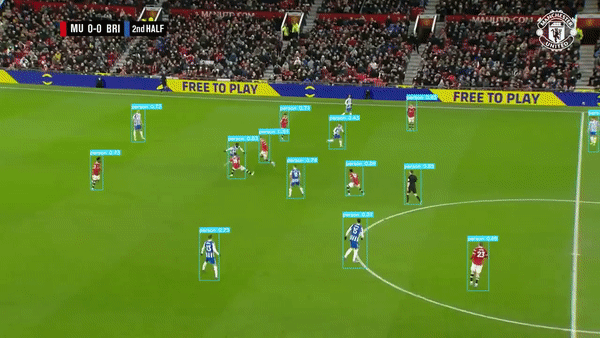
Olawale Abimbola
Data Scientist | Researcher
Creative Advanced Technologies
Dubai, United Arab Emirate
Email: abimbolaolawale41@gmail.com

Data Scientist | Researcher
Creative Advanced Technologies
Dubai, United Arab Emirate
Email: abimbolaolawale41@gmail.com

Custom Object Detection in sports analytics refers to the utilization of computer vision algorithms to detect, classify, and track specific objects, events, or players in a sport video. This technology has transformed the way sports analysis is carried out, providing valuable insights into player performance, tactics, and game strategies.
One of the crucial applications of custom object detection in sports analytics is player tracking. With the assistance of machine learning algorithms and computer vision techniques, it is possible to accurately track the movements of individual players on the field or court. This information can be utilized to analyze player performance and make improvements to their game, such as optimizing their running patterns and maximizing their coverage of the field.
The project mentioned above was a demonstration of using YOLOv5 custom object detection to track players on the football field. The results showed the potential of custom object detection in sports analytics and how it can be applied to improve player performance and tactics in a game.
In conclusion, custom object detection in sports analytics is a powerful tool that provides valuable insights into player performance, tactics, and game strategies. As technology continues to advance, we can expect to see more innovative applications of this technology in the field of sports analysis and broadcasting.

In the last few years, deep learning has increasingly shown the potential to improve healthcare by aiding medical professionals with diagnostic processes and patient interactions. In particular, Convolutional Neural Networks (CNNs), a class of deep learning algorithms, have successfully been applied to classify images of biological features that are often used to help monitor overall health and detect disorders in patients. As the rate of COVID-19 increases the use of the traditional method of diagnosing becomes too inefficient and time consuming therefore, a computational model that processes a CT scan sample Image and to classify if there exist COVID-19 or not in the image, have significant practical applications in the field of medicine. This project proposed to take a step towards creating this model by using Deep CNNs to build a model that can classify an CT scan image that contains COVID-19 or not. Three models (Xception, VGG-16, GoogleNet) were proposed and will be trained using a dataset of 2492 CT scan images

Object detection is a computer vision technique that involves identifying objects within an image or video frame. In the context of building identification in Africa, this technique can be used to accurately count buildings and identify key points of interest within settlements. The challenge of counting buildings in African settlements is due to the irregular arrangement of buildings, which can often make it difficult for traditional computer vision techniques to accurately identify and count the structures.
However, with the advancement of deep learning and computer vision, it is now possible to train computer vision models to identify objects with high accuracy, even in challenging environments. In this project, a framework will be developed that uses object detection algorithms to accurately identify buildings in African settlements. The framework will be trained using large datasets of images of African settlements, allowing it to learn the unique characteristics and features of the buildings in these areas.
The above image is an output of the detection of rooftops using a custom detection method.